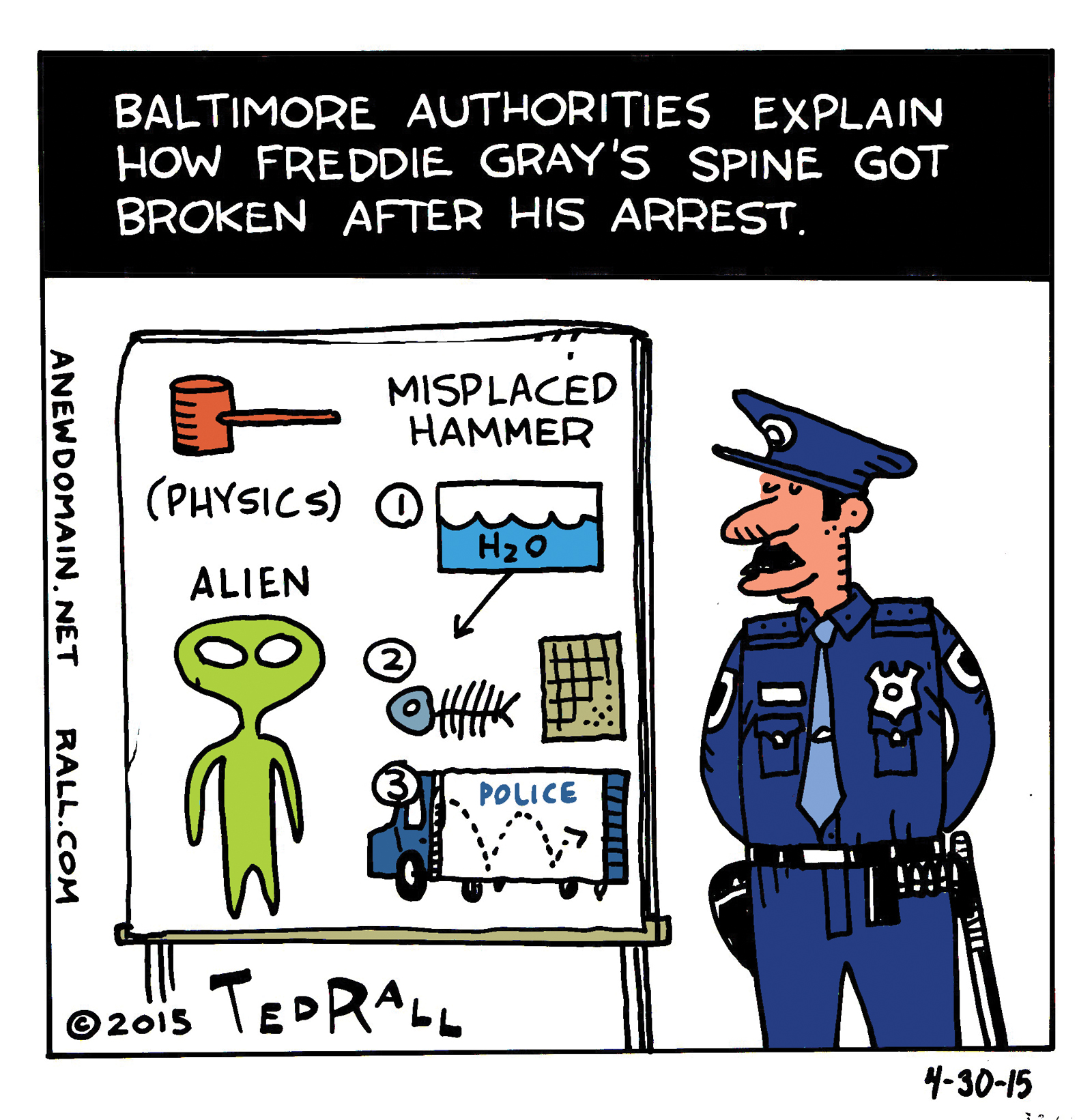Originally published by ANewDomain.net:
Attempting to explain how Freddie Gray’s spine was broken in police custody, Baltimore police authorities release a report that implies that he may have suicidally attempted to beat himself to death in the paddy wagon. Uh-huh.


